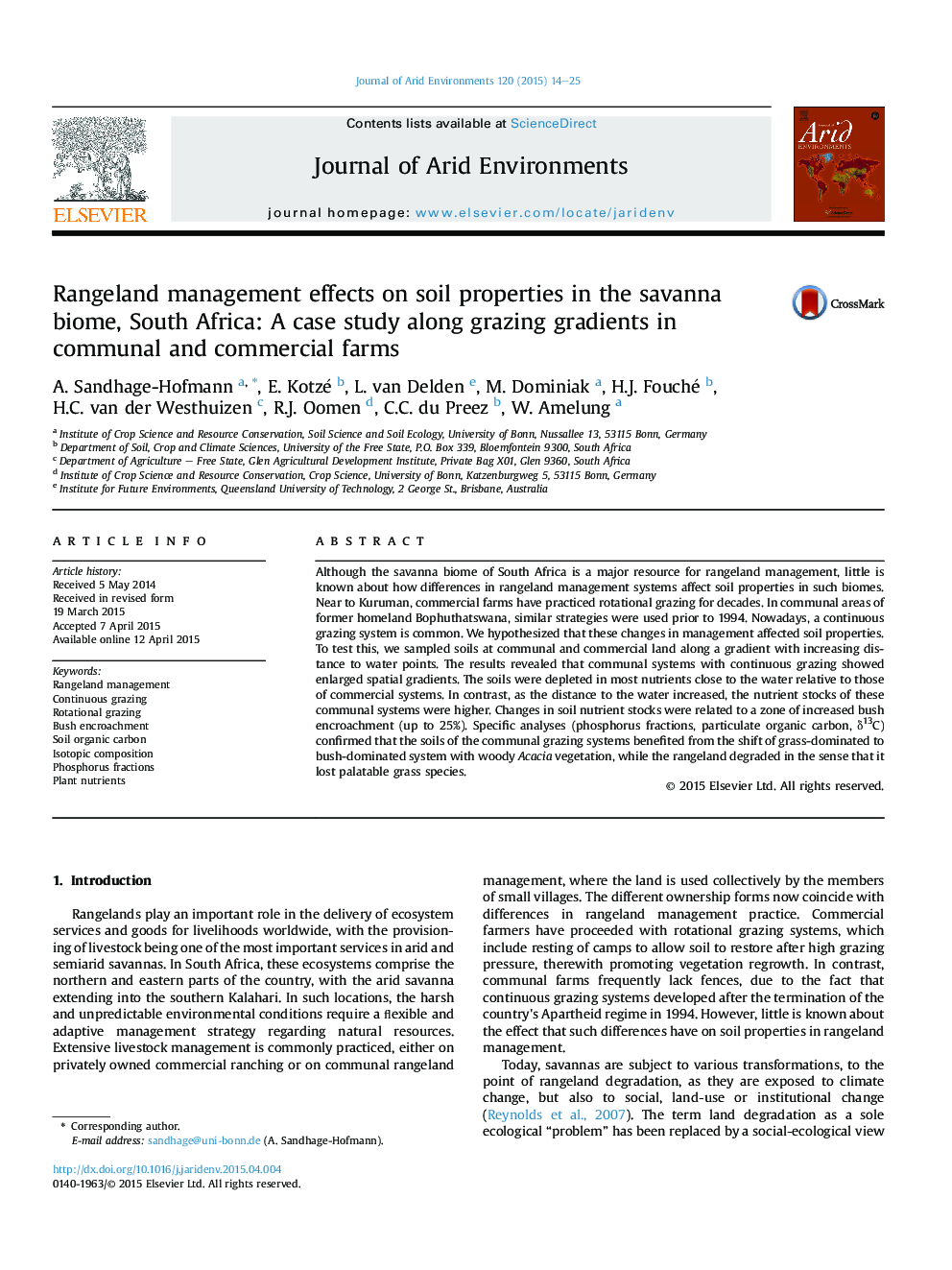| Article ID | Journal | Published Year | Pages | File Type |
|---|---|---|---|---|
| 4392814 | Journal of Arid Environments | 2015 | 12 Pages |
•Different rangeland management systems affect soil properties in grazing gradients different.•Continuous grazing led to rangeland degradation along grazing gradients, which was accompanied by bush encroachment.•Soil properties under continuous grazing improved, but on the cost of grazing area.•Nutrient status of soils under rotational grazing remained low.
Although the savanna biome of South Africa is a major resource for rangeland management, little is known about how differences in rangeland management systems affect soil properties in such biomes. Near to Kuruman, commercial farms have practiced rotational grazing for decades. In communal areas of former homeland Bophuthatswana, similar strategies were used prior to 1994. Nowadays, a continuous grazing system is common. We hypothesized that these changes in management affected soil properties. To test this, we sampled soils at communal and commercial land along a gradient with increasing distance to water points. The results revealed that communal systems with continuous grazing showed enlarged spatial gradients. The soils were depleted in most nutrients close to the water relative to those of commercial systems. In contrast, as the distance to the water increased, the nutrient stocks of these communal systems were higher. Changes in soil nutrient stocks were related to a zone of increased bush encroachment (up to 25%). Specific analyses (phosphorus fractions, particulate organic carbon, δ13C) confirmed that the soils of the communal grazing systems benefited from the shift of grass-dominated to bush-dominated system with woody Acacia vegetation, while the rangeland degraded in the sense that it lost palatable grass species.
